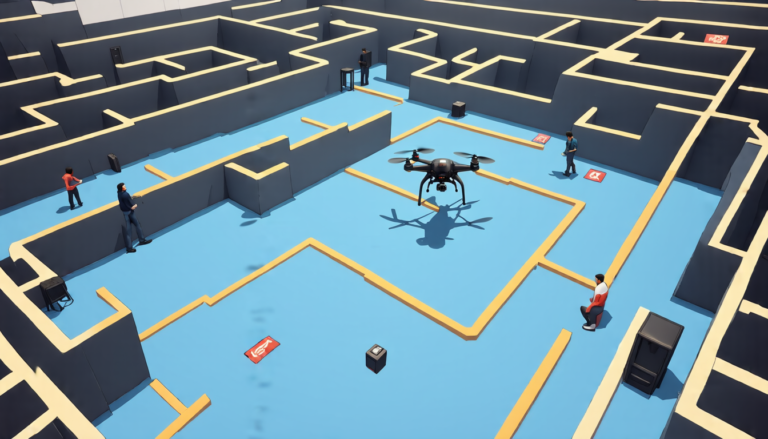Thursday 01 May 2025
Researchers have made a significant breakthrough in developing autonomous robots that can navigate complex environments, find specific objects and achieve their goals without prior training or human intervention.
The team has designed an innovative system called Closed-Loop Hierarchical Chain-of-Thought Navigation (CL-CoTNav), which combines the strengths of artificial intelligence and robotics to enable robots to learn from experience and adapt to new situations.
The CL-CoTNav system uses a combination of visual and linguistic models to enable robots to understand their surroundings, identify objects and navigate through spaces. The visual model is trained on vast amounts of data, allowing it to recognize patterns and make predictions about what the robot might encounter in its environment.
The linguistic model, on the other hand, enables the robot to understand natural language commands and generate responses based on its observations. This allows the robot to communicate with humans and receive feedback on its actions, refining its navigation skills over time.
One of the key features of CL-CoTNav is its ability to learn from experience through a process called hierarchical chain-of-thought reasoning. This involves breaking down complex tasks into smaller, more manageable steps, allowing the robot to reason about its environment and make decisions based on its observations.
In testing, the CL-CoTNav system was able to navigate through complex environments, find specific objects and achieve its goals without prior training or human intervention. The robot was able to adapt to new situations and learn from its mistakes, making it a highly effective navigation tool.
The implications of this technology are significant, with potential applications in areas such as search and rescue, healthcare and manufacturing. The ability to develop autonomous robots that can navigate complex environments and achieve specific goals without human intervention could revolutionize the way we approach tasks such as disaster response and medical treatment.
In addition to its practical applications, the CL-CoTNav system also has significant implications for our understanding of artificial intelligence and robotics. The development of a robot that can learn from experience and adapt to new situations challenges our traditional notions of AI and pushes the boundaries of what is possible with machine learning.
Overall, the CL-CoTNav system represents a major step forward in the development of autonomous robots, offering significant potential for practical applications and insights into the nature of artificial intelligence.
Cite this article: “Autonomous Navigation Breakthrough: AI-Powered Robots Learn to Adapt and Achieve Goals”, The Science Archive, 2025.
Artificial Intelligence, Autonomous Robots, Navigation, Robotics, Closed-Loop System, Hierarchical Chain-Of-Thought, Machine Learning, Natural Language Processing, Visual Models, Linguistic Models







